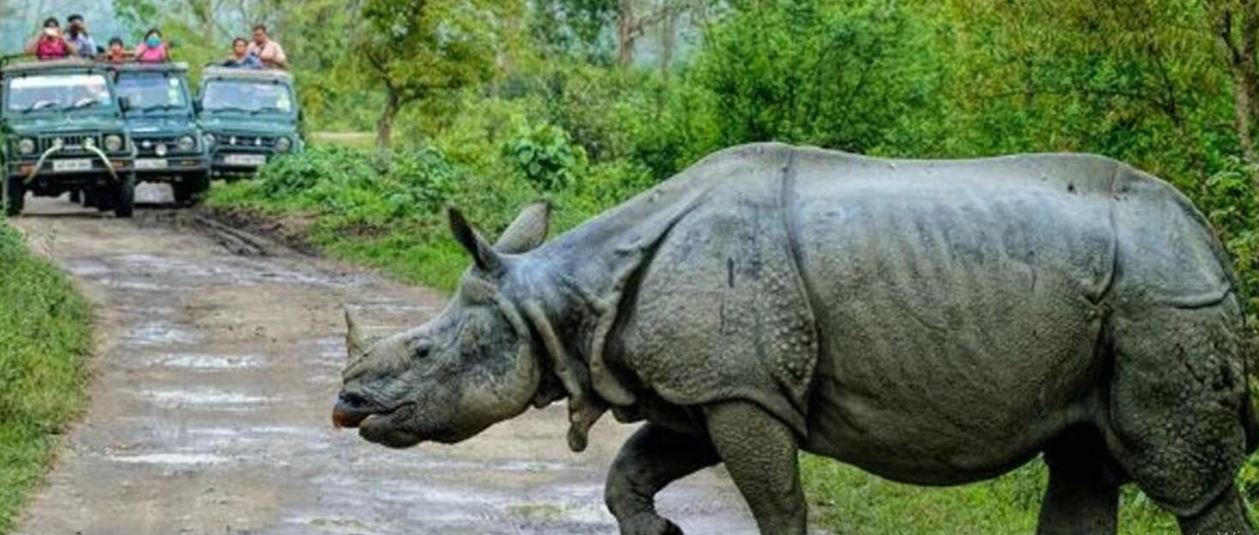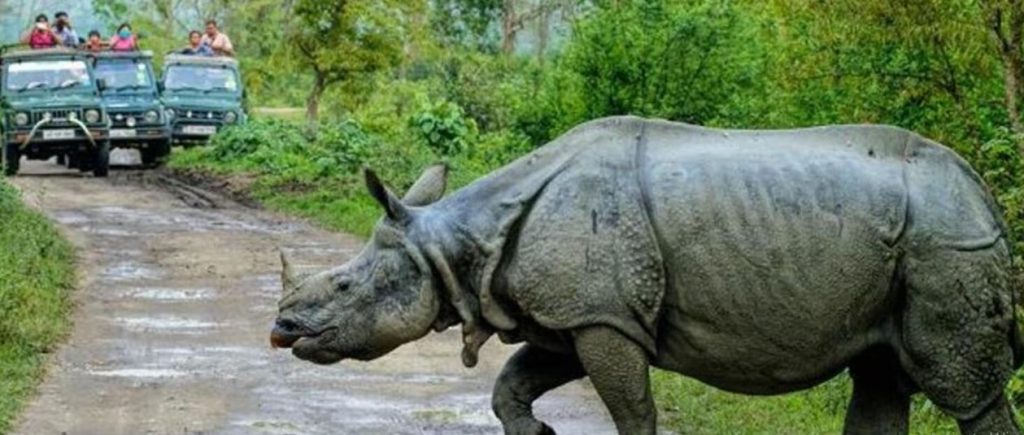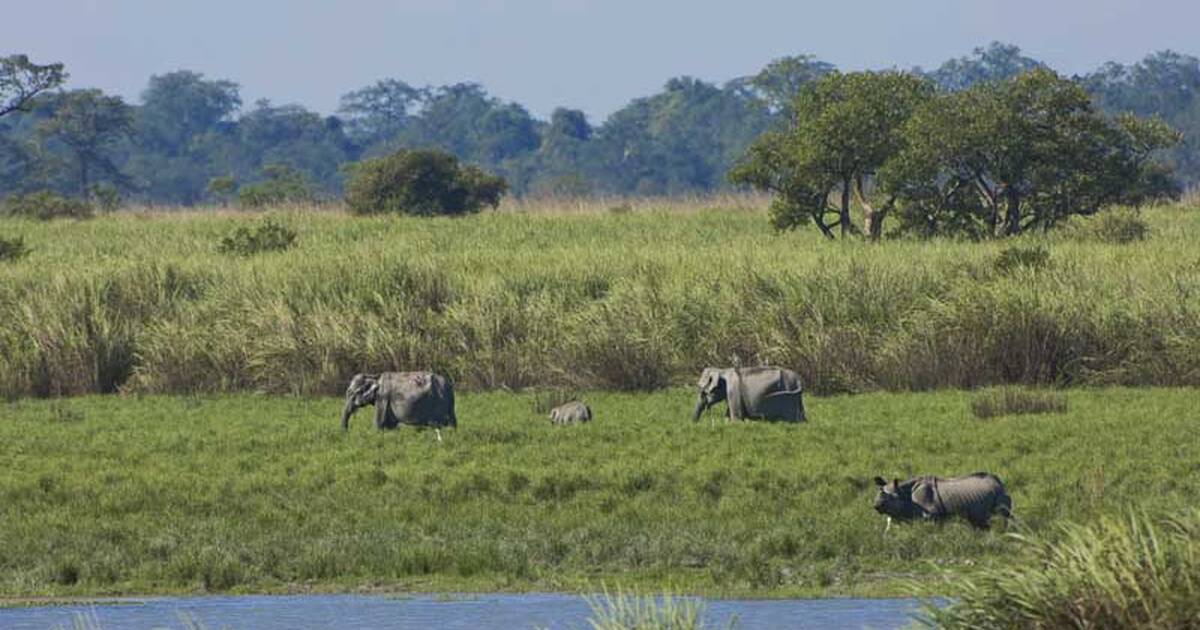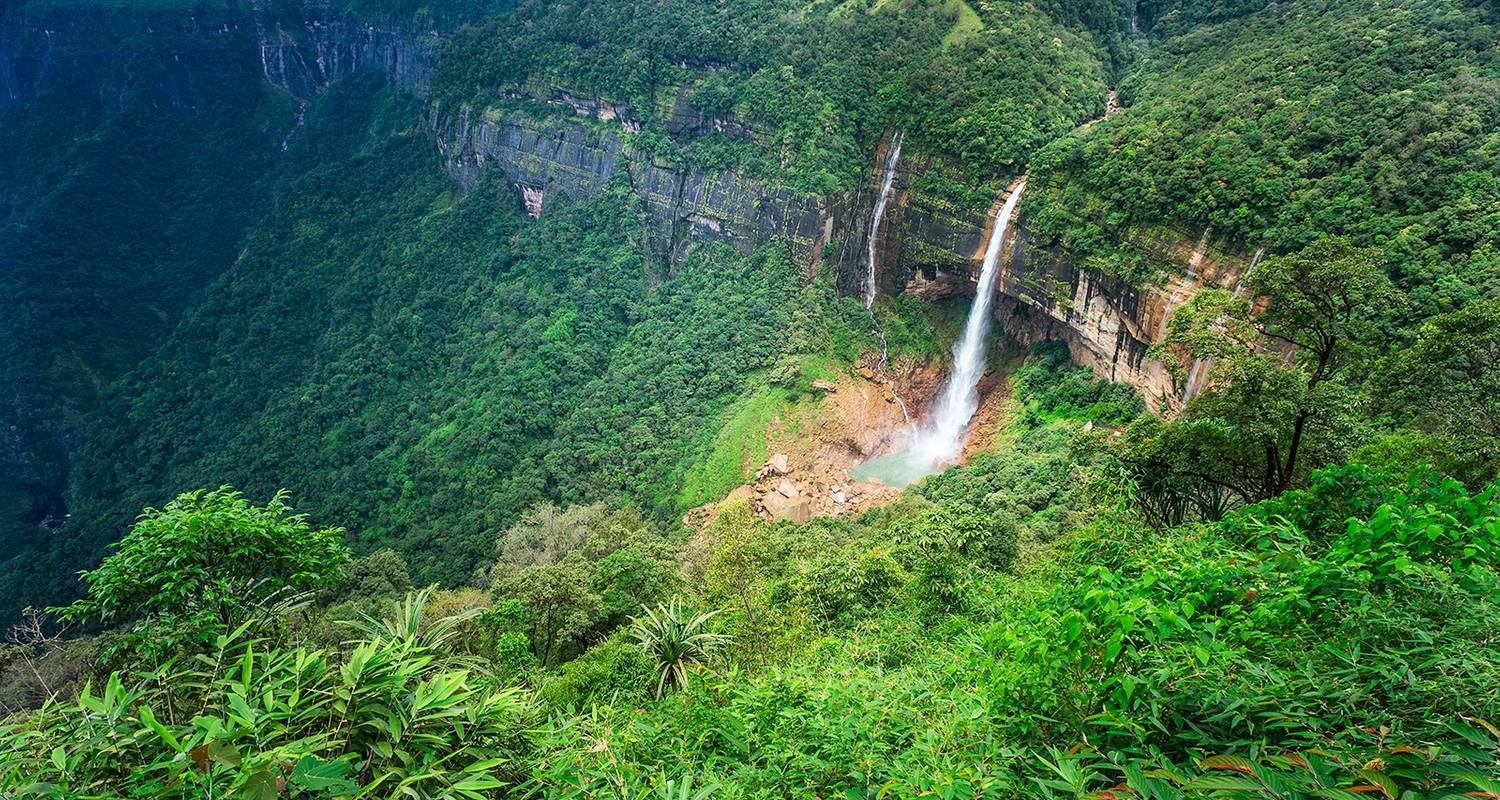
The Greater One-Horned Rhinos of Kaziranga National Park
The Greater One-Horned Rhinoceros is a true treasure of Kaziranga National Park. Nested at the Golaghat and Nagaon districts in Assam, Kaziranga houses the highest population of the one-horned rhinos. The Indian rhinoceros also referred to as the greater one-horned rhino, holds the distinction of being the largest rhinoceros species globally. Adult males can weigh close to three tonnes and surpass the height of the average human. As its name suggests, this rhino species bears a single horn, distinguishing it from its African relatives. Interestingly, while the one-horned rhino is renowned for its singular horn, it shares this feature with another rhino species, the Javan rhino.

The greater one-horned rhino is a remarkable conservation success story. The Greater one-horned rhino inhabits regions of India and Nepal, primarily within the foothills of the Himalayas. Historically, these rhinos roamed unrestricted in the floodplains and forests adjacent to the Brahmaputra, Ganges, and Indus River valleys. Once abundant across northern India, these majestic creatures faced severe threats from hunting and habitat loss, pushing their population to the brink. By the early 20th century, only a mere 200 Indian rhinos remained in the wild. However, dedicated conservation initiatives have since reversed this decline, resulting in a remarkable twentyfold increase in their numbers.
Interesting Facts about the One-horned Rhinos of Kaziranga
While venturing into the forest by Kaziranga Jeep Safari,these huge creatures beautifully grace the experience with frequent sightings. Let’s learn about the Indian Rhinoceros to get acquainted with their lifestyle and other facts.
General Nature of the Greater One-Horned Rhinos – The Greater One-Horned Rhino earns its name from its prominent single horn, measuring approximately 8.25 inches in length and weighing up to 3 kg. Structurally akin to the hooves of horses, the horn has the unique ability to regrow if broken. Contrary to combat, it serves primarily for foraging and rooting for food. Its skin, resembling grey plates of armor with rivets, contributes to its tank-like appearance. Thriving in semi-aquatic habitats, these rhinos are commonly found in swamps, forests, and riversides, drawn to locations rich in nutritious minerals. With prehensile lips adapted for grasping grass, they graze in floodplain areas, exhibiting a grazing pattern synchronized with cooler temperatures to combat the heat. Despite their weight of up to 2200 kg, they exhibit adept swimming skills. Typically solitary until adulthood, they congregate at wallows or grazing grounds later in life. While their eyesight may be poor, their acute senses of smell and hearing compensate, contributing to their overall sensory acuity.
Dietary Constituents – Indian rhinoceroses are primarily herbivores, sustaining themselves on a diet predominantly composed of grasses, along with leaves, shrub branches, fruits, and aquatic plants. Their feeding habits exhibit a strong seasonal variation, encompassing a diverse array of plant species, including submerged and floating aquatic plants, as well as crops. On average, they consume food equivalent to approximately 1% of their body weight daily. Additionally, these rhinos are adept swimmers, utilising this skill to access food sources in aquatic environments.
Breeding and Birth of the Greater One-Horned Rhinos – Female Greater one-horned rhinos typically reach breeding maturity at 4 years of age, while males achieve sexual maturity around 9 years old. Breeding occurs throughout the year, with females spacing births approximately 3-4 years apart. The gestation period spans 15-16 months, after which females seek out solitary, secluded areas to give birth. Newborn calves weigh between 58-70 kg and remain with their mothers for the first year and a half before becoming independent. During this time, calves consume an average of 20-30 liters of milk daily and gain 1-2 kg in weight per day. While they start nibbling on roughage at 3-5 months old, some may continue to suckle until they are 20 months old. Young calves are vulnerable to predation by tigers in their natural habitat.


